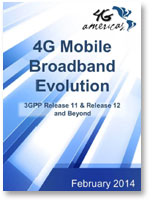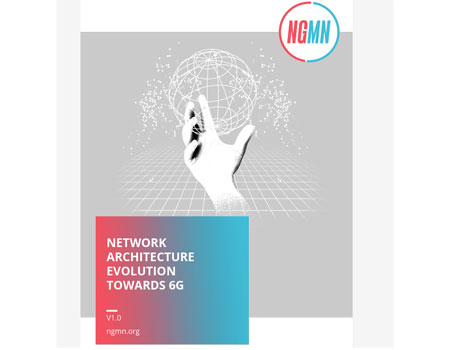
4G Americas Report on 3GPP Release 11 and 12 Standards
February, 2014
4G Americas has published its Annual look at the features behind the current technologies from 3GPP. The 4G Mobile Broadband Evolution paper starts with a topical joke, but quickly settles in to being a thorough overview of progress on the two most recent Releases.
The Paper covers these Release 11 and Release 12 Features:
(The following text is from the 4GA press release)
Release11
3GPP Rel-11 standards for HSPA+ and LTE-Advanced were frozen in December 2012 with the core network protocols stable in December 2012 and Radio Access Network (RAN) protocols stable in March 2013. Key features detailed in the paper for Rel-11 include:
HSPA+:
|
LTE-Advanced:
|
Finally, Rel-11 introduces several network and service related enhancements (most of which apply to both HSPA and LTE):
- Machine Type Communications (MTC)
- IP Multimedia Systems (IMS)
- Wi-Fi integration
- Home NodeB (HNB) and Home e-NodeB (HeNB)
Release 12
3GPP started work on Rel-12 in December 2012 and an 18-month timeframe for completion was planned. The work continues into 2014 and areas that are still incomplete are carefully noted in the report. Work will be ratified by June 2014 with the exception of RAN protocols which will be finalized by September 2014. Key features detailed in the paper for Rel-12 include:
HSPA+:
|
LTE-Advanced:
|
All the mentioned enhancements in the standards work are carefully explained in the white paper, outlining the clear road forward in the development of 3GPP mobile broadband standards. The importance of this planning cannot be minimalized in the face of a global interconnection of billions of things today, and an increasing number of devices in the future of the Internet of Things.
4G Mobile Broadband Evolution: 3GPP Release 11 & Release 12 and Beyond, was written collaboratively by members of 4G Americas and is available for free download at: www.4gamericas.org.
About 4G Americas:
4G Americas is an industry trade organization composed of leading telecommunications service providers and manufacturers. The organization's mission is to advocate for and foster the advancement and full capabilities of the 3GPP family of mobile broadband technologies, including LTE-Advanced, throughout the ecosystem's networks, services, applications and wirelessly connected devices in the Americas. 4G Americas contributes to the success of 3GPP technologies and their No. 1 place in the region. 4G Americas is headquartered in Bellevue, Wash. More information is available at www.4gamericas.org.
Contact:
Vicki Livingston
4G Americas
vicki.livingston@4gamericas.org
Further reading:
- 3GPP RAN: Rel-12 and beyond (Article by the RAN Chairman, Dino Flore)
- Release 12 prioritization - A video discusssion on some of the key topics

 Partners News
Partners News 




